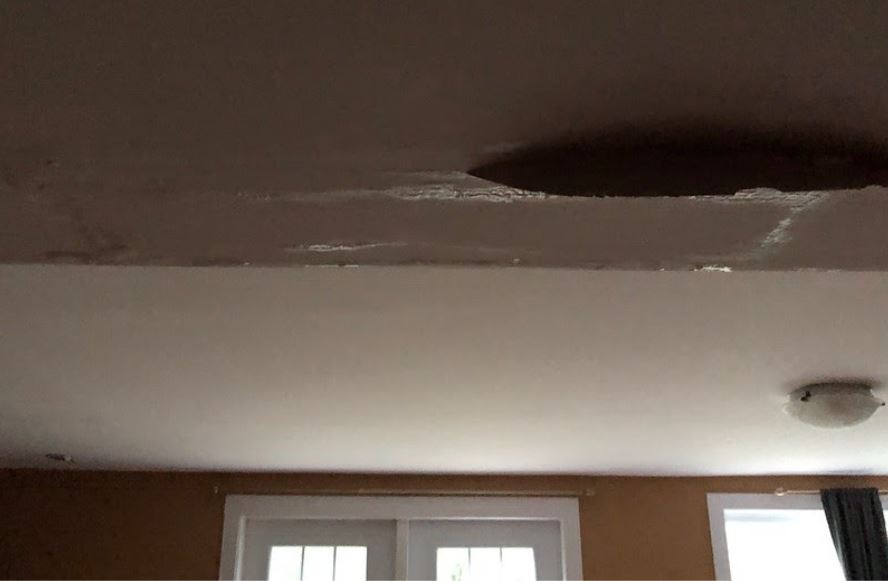Discovering the Six Most Common Causes of Water Leaks in Your Home
Discovering the Six Most Common Causes of Water Leaks in Your Home
Blog Article
We've stumbled upon the article on How to Find Water Leaks listed below on the web and reckoned it made good sense to discuss it with you on this site.

Leaks not just create waste of water however can also create unnecessary damages to your house and advertise undesirable organic development. By comprehending and looking for everyday scenarios that create leaks, you can shield your house from future leakages as well as unneeded damage.
Instantaneous temperature level changes.
Severe temperature level modifications in our pipelines can cause them to broaden and also contract suddenly. This development and tightening might cause fractures in the pipelines, specifically if the temperature are below cold.
Rusty water systems
This could be the cause of discoloration or warping on your water pipes. If our plumbing system is old, take into consideration changing the pipelines given that they are at a greater risk of corrosion than the newer designs.
Faulty Pipeline Joints
Pipeline joints can wear away over time, resulting in water leakages. If you have noisy pipes that make ticking or banging sounds, specifically when the warm water is turned on, your pipe joints are probably under a whole lot of pressure.
Encroaching roots
The majority of water leakages start outside the residence instead than inside it. You could observe wet spots or sinkholes in your lawn, and that could indicate that tree roots are invading water lines causing water to leak out.
Poor Water Connectors
At times, a leakage can be caused by loosened hoses and also pipes that provide your devices. In instance of a water connections leakage, you might discover water running straight from the supply line or pools around your home appliances.
Obstructed Drains
Blocked drains may be irritating as well as inconveniencing, yet they can in some cases wind up creating an overflow bring about rupture pipelines. Maintain removing any type of products that may go down your drains pipes that might obstruct them to stay clear of such hassles.
All the above are sources of leakages but not all water leaks arise from plumbing leaks; some leaks may originate from roof covering leaks. All leaks must be fixed instantly to avoid water damage.
Leaks not just create waste of water yet can also cause unnecessary damage to your home as well as advertise undesirable natural development. By understanding and also looking for everyday situations that trigger leaks, you can secure your house from future leakages and also unneeded damage. Today, we will look at six leak causes that may be triggering your pipes to drip.
At times, a leak can be triggered by loosened hose pipes as well as pipes that provide your devices. In instance of a water links leakage, you might see water running straight from the supply line or pools around your devices.
How To Check For Water Leak In Your Home
How To Check for Leaks
The average household's leaks can account for nearly 10,000 gallons of water wasted every year and ten percent of homes have leaks that waste 90 gallons or more per day. Common types of leaks found in the home are worn toilet flappers, dripping faucets, and other leaking valves. These types of leaks are often easy to fix, requiring only a few tools and hardware that can pay for themselves in water savings. Fixing easily corrected household water leaks can save homeowners about 10 percent on their water bills.
To check for leaks in your home, you first need to determine whether you're wasting water and then identify the source of the leak. Here are some tips for finding leaks:
Take a look at your water usage during a colder month, such as January or February. If a family of four exceeds 12,000 gallons per month, there are serious leaks.
Check your water meter before and after a two-hour period when no water is being used. If the meter changes at all, you probably have a leak.
Identify toilet leaks by placing a drop of food coloring in the toilet tank. If any color shows up in the bowl after 10 minutes, you have a leak. (Be sure to flush immediately after the experiment to avoid staining the tank.)
Examine faucet gaskets and pipe fittings for any water on the outside of the pipe to check for surface leaks.
Undetected water leaks can happen without the home or business owner even realizing. If you suspect a water leak, but not able to find the source. It is time to contact a professional water leak detection service, The Leak Doctor.
How To Find a Water Leak In Your Home
https://www.leakdoctor.com/blog/How-To-Check-For-Water-Leak-In-Your-Home_AE197.html

Hopefully you enjoyed reading our topic on How to Find Water Leaks. Thanks so much for taking a few minutes to browse our blog post. Sharing is good. Helping others is fun. Thank you for your time. Don't hesitate to come visit our blog back soon.
Schedule Today Report this page